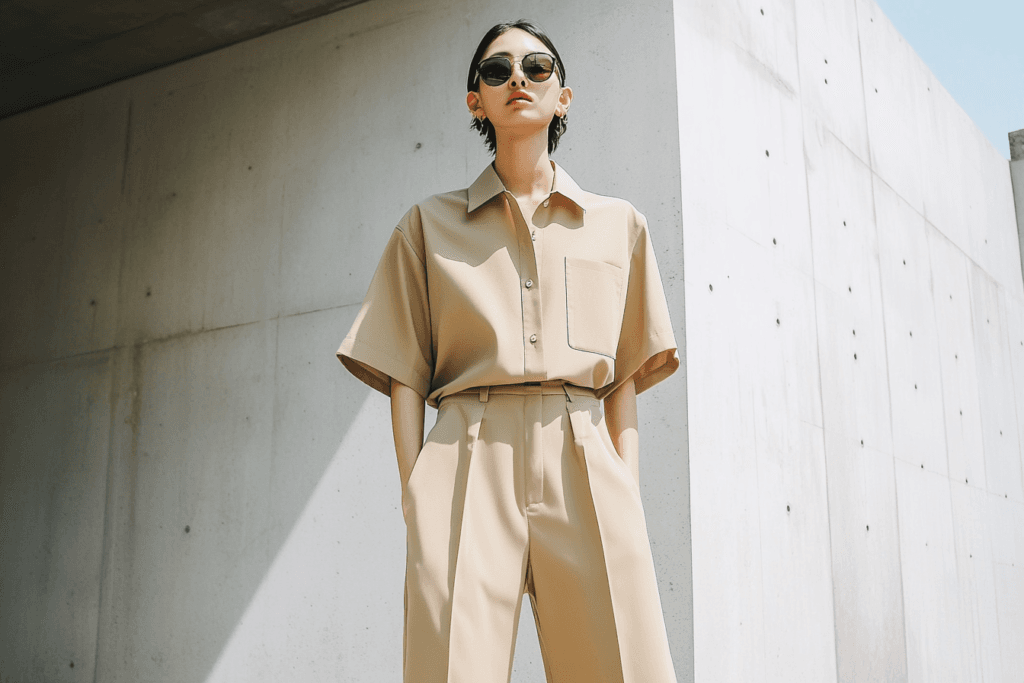
Breathable fabric helps you stay comfy in any weather. It lets air pass through and removes moisture, keeping you dry. Think of a shirt that changes with your body heat. When you’re hot, it releases heat. When you’re cold, it keeps you warm.
Scientists made fabrics with loose threads and special yarn. These fabrics can change how they handle heat by over 35%. This means breathable fabric doesn’t just feel nice; it helps control your temperature.
Whether shopping or hiking, it’s great for staying comfortable.
Key Takeaways
- Breathable fabric keeps you comfy by letting air move through.
- Cotton and linen are natural fibers that breathe well.
- Synthetic fabrics use special tech to handle sweat better.
- These fabrics help keep your body cool during activities.
- Check for certifications to make sure the fabric works well.
- Try the ‘blow test’ to see if air passes through it.
- Moisture-wicking fabrics help you stay dry when you sweat.
- Not all natural fabrics breathe; check how thick or tight they are.
- Breathable fabrics can be cheap; cotton and polyester blends work too.
What is “Breathable Fabric”?
Breathable fabric feels light and cool, even in hot weather. But what does “breathable” mean? It’s how fabric lets air and moisture move through. This helps keep your body temperature steady and makes you feel comfortable.
Here’s a simple look at how fabrics breathe:
- Natural Fabrics: Let air flow and remove sweat.
- Synthetic Fabrics: Use humidity changes to manage air and sweat.
- Specialized Materials: Like GORE-TEX, keep water out but let sweat escape.
Different fabrics have different levels of breathability. Natural fibers like cotton and linen allow air to flow easily. They also pull sweat away from your skin, keeping you cool. Synthetic fabrics are made using special technology. For example, polyamide moves sweat through the fabric when there’s a humidity difference inside and outside. These fabrics are great for sports and outdoor activities.
How Does Breathability Affect Comfort and Performance?
Breathable fabric makes you feel better all day long. Imagine wearing clothes that trap heat and sweat—it would feel sticky and gross. Breathable fabrics fix this by letting heat and sweat escape. This keeps your skin dry and stops you from overheating.
For athletes or active people, breathable fabric is even more important. It helps control body heat and lowers the chance of heat stress. Scientists use tests like the Sweating Hot Plate to check how fabrics handle heat and sweat. These tests prove breathable fabrics improve comfort and help you perform better.
Here’s a table showing key fabric features:
| Property Performance | Fabric Requirements | Example End Uses | Related Test Methods |
|---|---|---|---|
| Breathability | Moves water vapor through fabric and seams | Sportswear, outdoor coats | Sweating guarded hot plate (Ret), Upright cup |
The Science Behind Breathability: Airflow and Moisture Management
Breathable fabric works because of airflow and sweat control. Air permeability means how much air can pass through fabric. Fabrics with more tiny holes let more air through, making them breathable. Studies show woven fabrics are slightly better than knit ones for airflow.
Sweat control is also key. Breathable fabrics pull sweat off your skin and let it dry. This keeps you comfortable and dry. Advanced materials like GORE-TEX do even more. They stop rain from getting in but let sweat out. This keeps you dry inside and outside.
GORE-TEX is a cool fabric used in hiking boots and jackets. It lets sweat out but blocks rain from coming in.
Learning how breathable fabrics work makes me appreciate their design. Whether for sports, work, or daily wear, they really improve comfort and performance.
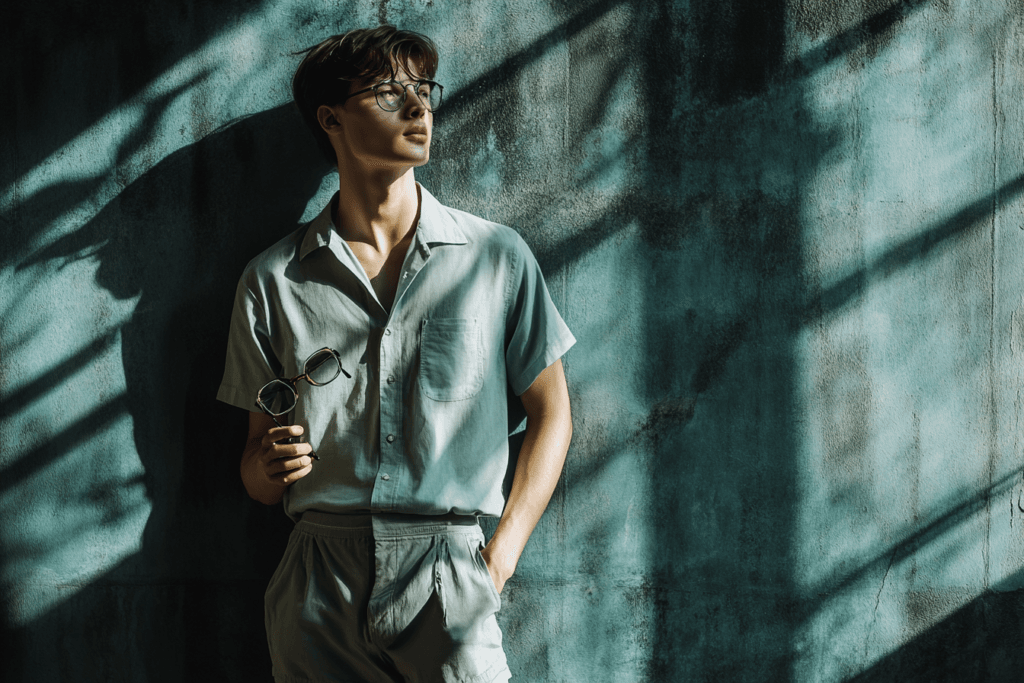
How Many Types of Breathable Fabrics
Cotton
Natural Breathability and Comfort
Cotton is a great breathable fabric. It feels soft and lets air flow easily. This makes it perfect for hot weather. Its natural fibers soak up sweat, keeping skin dry. Studies show cotton’s breathability makes it very comfy to wear. Whether running errands or relaxing, cotton keeps me cool and fresh.
Cotton’s fibers have tiny gaps that let air move through. This stops heat from building up. That’s why cotton is great for casual clothes and work outfits. Comfort is its main strength.
Best for: Casual Wear, Workwear
I like cotton for everyday clothes like T-shirts and pants. It’s also good for work outfits, especially for long indoor hours. Cotton helps control temperature and removes sweat, keeping me comfy all day.
Linen
Highly Breathable for Hot and Humid Conditions
Linen is my go-to for hot, sticky weather. Its fibers breathe well, letting air pass through easily. This makes it perfect for humid places where staying cool is hard. Linen’s loose weave boosts airflow, keeping me comfy on hot days.
Linen absorbs sweat fast and dries quickly. This is super helpful in summer. Linen clothes don’t stick to my skin, even when I sweat. It’s great for vacations or outdoor fun in tropical weather.
Best for: Summer Apparel, Resort Wear
I love linen for summer clothes like dresses and shorts. It’s also great for resort wear because it feels breezy and looks stylish. Whether by the pool or at the beach, linen keeps me cool and fashionable.
Bamboo Fabric
Eco-Friendly and Naturally Breathable
Bamboo fabric is great at handling sweat. It pulls sweat away and dries fast, keeping me cool during exercise. Bamboo also fights bacteria, stopping odors and keeping clothes fresh.
Bamboo fabric is amazing for being eco-friendly and breathable. Bamboo grows fast without replanting and uses less water than cotton. Its fibers naturally let air flow, helping control body heat.
Tip: Bamboo fabric is ideal for breathable clothes and eco-friendly choices.
Best for: Activewear, Eco-Conscious Brands
I pick bamboo fabric for workout clothes like leggings and tops. It’s also loved by eco-friendly brands that care about the planet. Bamboo’s breathability, sweat-wicking, and green benefits make it a top choice for both sports and daily wear.
Polyester Mesh
Strong and Breathable
Polyester mesh is tough and lets air flow easily. It works great for sports clothes and outdoor gear. Its design has bigger holes that allow air to pass through. This keeps me cool and comfy during hard activities.
Breathability matters a lot for sports fabrics. Polyester mesh is excellent at this. A big sports brand tested it and found it breathes better than similar fabrics. This helps sweat dry faster, keeping athletes fresh and comfy. I’ve felt this myself while wearing polyester mesh for workouts. It really helps me stay focused and comfortable.
Why polyester mesh is awesome:
- Air moves easily through its open design.
- Sweat dries fast, making it more comfortable.
- It’s strong and lasts a long time.
I like how this fabric is both strong and light. Whether hiking or playing sports, it supports me without feeling heavy. It stays in good shape even after lots of use in tough conditions.
Best for: Sports Clothes, Outdoor Gear
Polyester mesh is great for sports clothes like jerseys and shorts. It’s also perfect for outdoor gear like backpacks and jackets. Its breathability and strength make it ideal for active people.
Nylon-Spandex Blends
Stretchy and Breathable for Active Clothes
Nylon-spandex blends are my favorite for workout clothes. This fabric stretches and breathes well. It’s usually made of 80-90% nylon and 10-20% spandex. This mix makes it strong and stretchy.
Nylon-spandex blends are light and let air flow. They help control body heat and keep sweat away. This is super helpful for hard workouts where you sweat a lot.
Why nylon-spandex blends are great:
- They stretch well, helping you move easily.
- The light fabric feels comfy to wear.
- Air passes through, stopping you from getting too hot.
When I wear nylon-spandex blends, I can move freely. The fabric stretches with me during yoga or running. Its breathability keeps me cool, even during tough exercises.
Best for: Workout Clothes, Casual Activewear
I suggest nylon-spandex blends for workout clothes like leggings and tops. They’re also great for casual activewear, mixing comfort and style for daily use.
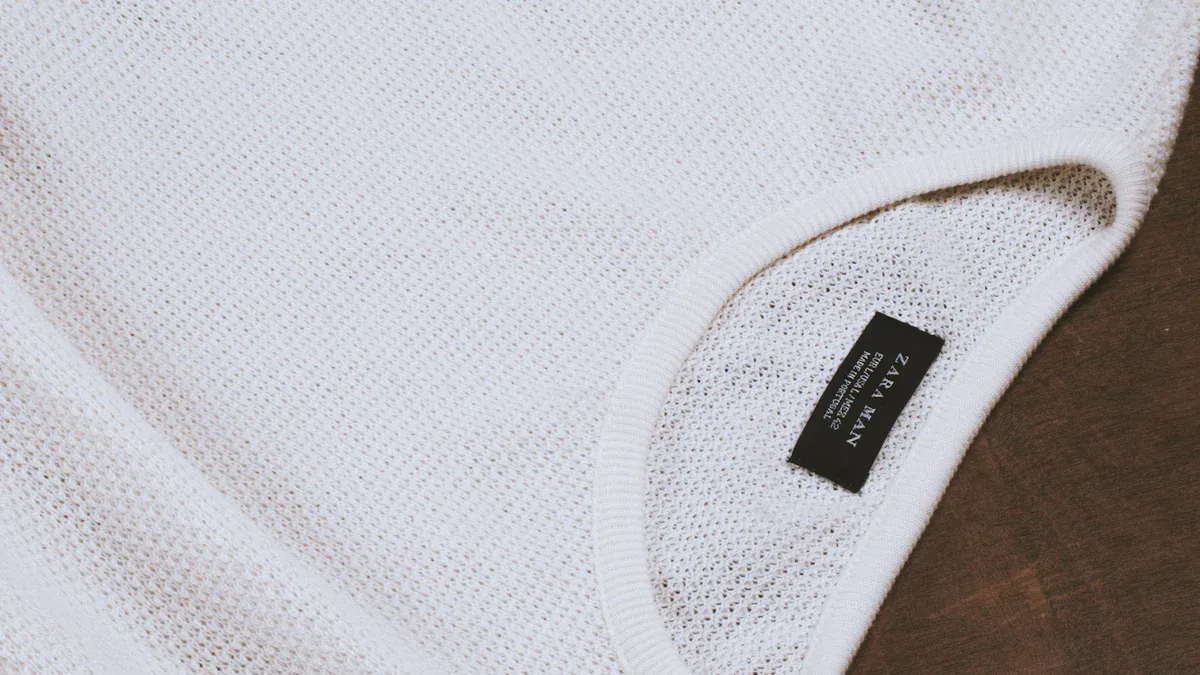
How Breathable Fabric Works
The Role of Air Permeability in Breathable Fabrics
Air permeability is key to how breathable fabric works. It shows how much air can pass through a fabric. Fabrics with more air permeability let more air flow. This helps keep me cool and comfy, especially outdoors. Breathable clothes stop heat from building up, making them great for active days.
Scientists use tests like the ASTM D737 method to measure air permeability. This test checks how much air moves through fabric under set conditions. Results are shown in cubic feet or meters per minute. These numbers tell how breathable the fabric is.
Machines like the Gurley Tester and Frazier Tester also test air permeability. Each machine works differently but ensures fabrics meet comfort and performance standards.
Moisture-Wicking vs. Breathability: What’s the Difference?
I thought moisture-wicking and breathability were the same, but they’re not. Moisture-wicking fabrics pull sweat off my skin and dry it fast. Breathable fabrics focus on airflow and keeping me cool.
Here’s the difference:
- Moisture-Wicking: Moves sweat away to keep me dry.
- Breathability: Lets air flow to keep me cool.
Some fabrics do both. For example, microporous membranes like Gore-Tex let sweat out but block water. This is great for outdoor gear. Other fabrics use hydrophilic coatings to move moisture without pores.
Here’s a table explaining these technologies:
| Technology Type | Description |
|---|---|
| Microporous Membranes | Let sweat vapor out but block water, e.g., Gore-Tex. |
| Hydrophilic Coatings | Absorb and move moisture vapor using chemicals, no pores. |
| Combination Fabrics | Mix microporous membranes and hydrophilic coatings for better results. |
How Fabrics are Tested for Breathability
Testing breathability ensures fabrics work well. Scientists use methods to check airflow and moisture control.
The ASTM D737 method is common. It measures how much air passes through fabric. This test ensures fabrics meet breathability standards.
Other tools include the Gurley Tester and Frazier Method. The Gurley Tester checks low-permeability materials like paper. The Frazier Method quickly tests garment breathability.
Here’s a table of these methods:
| Testing Method | Description | Key Features |
|---|---|---|
| ASTM D737 | Measures airflow through fabric samples. | Reliable, Standardized, Accurate |
| Gurley Tester | Tests low-permeability materials like paper or nonwoven fabrics. | Useful for quality checks |
| Frazier Method | Measures airflow under fixed pressure. | Quick for garments and gear |
These tests show why breathable fabrics feel so good. They ensure my sportswear, casual clothes, or outdoor gear meet top standards for airflow and moisture control.
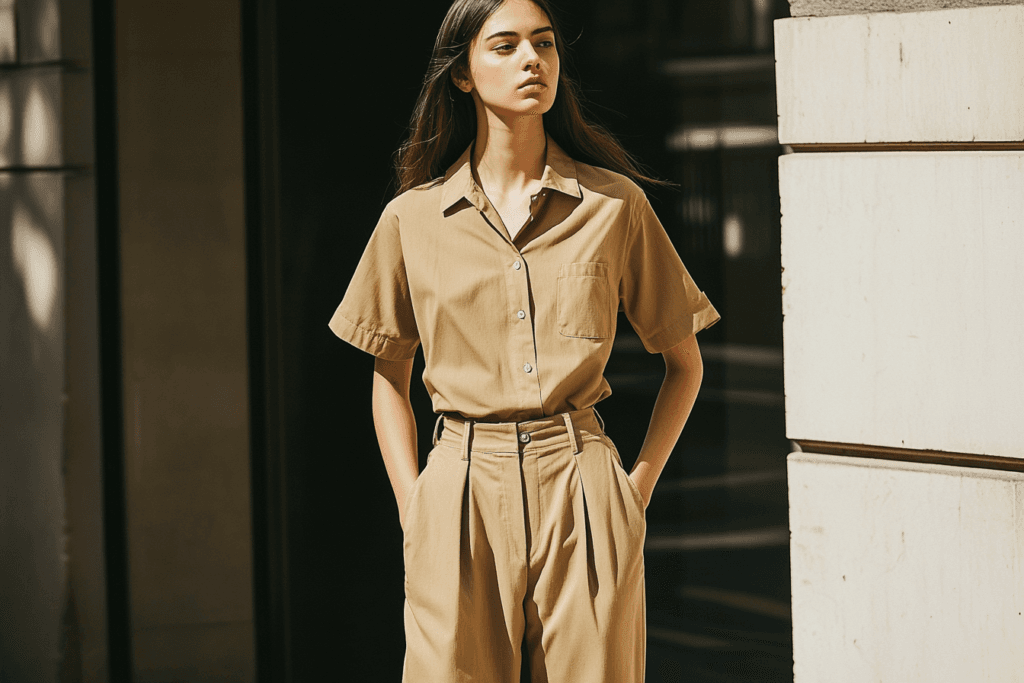
How to Identify Breathable Fabrics When Shopping
Check for Important Certifications
When buying breathable fabrics, I always look for certifications. These prove the fabric meets breathability and performance standards. They help me trust the fabric will keep me comfy.
Here are some common certifications to know:
| Standard | Compliance Rate | Testing Method |
|---|---|---|
| ASTM International | Varies | Tests breathability performance |
| ISO | Varies | Measures breathability |
| BS EN 31092 | ≤20 pa.m2/W | Checks breathability |
| ASTM E96 | ≥600g/m2/24h | Tests water vapor movement |
| JIS L 1099 | ≥10000g/m2/24h | Uses potassium acetate method |
These certifications show how well air and moisture pass through fabrics. For instance, ASTM E96 checks how much water vapor a fabric handles daily. This helps me choose fabrics that keep me cool and dry.
Tip: Look for tags or labels with these certifications. They make it easy to find quality breathable fabrics.
Notice Fabric Weight and Weave
Fabric weight and weave affect how breathable it is. Lighter fabrics breathe better because they trap less heat. Heavier fabrics, like interlock knits, hold more heat due to their thickness.
| Study | Findings |
|---|---|
| Havlová (2013) | Woven fabric design impacts air permeability. |
| Umair et al. (2016) | Fabric structure affects airflow and moisture control. |
| Zhu et al. (2018) | Cotton fabric structure predicts air permeability. |
| Marie (2018) | Air and water vapor flow depend on fabric structure. |
I also check the weave pattern. Looser weaves, like seersucker, let more air flow. They even create small air pockets that help with heat control. These are great for hot weather.
Note: Feel the fabric and hold it to the light. If light passes through, it’s likely breathable.
Try the “Blow Test”
A quick way to test breathability is the “blow test.” Hold the fabric near your mouth and blow air through it. If you feel air on the other side, it’s breathable.
This test is easy and works while shopping. I’ve noticed cotton and linen pass this test well, but thicker synthetic fabrics don’t.
Tip: Use the blow test for sportswear or summer clothes. It’s a simple way to ensure the fabric will keep you cool.
Check for Moisture-Wicking Properties
When I buy breathable fabrics, I check for moisture-wicking. This feature helps me stay dry and comfy, especially in heat or workouts. Moisture-wicking fabrics pull sweat off my skin and dry it fast. This stops me from feeling sticky or damp.
Here’s how I spot moisture-wicking fabrics:
- Quick Drying: Fabrics that dry fast are great at wicking sweat.
- Smooth Feel: Materials like polyester or nylon feel light and smooth, helping wick sweat.
- Performance Tags: Look for labels saying “moisture-wicking” or “sweat-wicking.”
I also touch the fabric to check. Moisture-wicking fabrics feel cool and dry, even after absorbing sweat.
Tip: Run water over the fabric. If it spreads and absorbs fast, it wicks well. If water beads up, it may not wick sweat.
Scientists tested how fabrics handle sweat and airflow. They used special tests to compare moisture-wicking and breathability. Results showed big differences between fabrics (p = 0.000). Extra tests, like Bonferroni correction, showed which fabrics worked best. Studies also found that humidity affects how fabrics handle sweat. Not all fabrics perform the same.
I’ve seen synthetic fabrics like polyester and nylon wick sweat better than most natural ones. But some natural fabrics, like bamboo, also work well because of their fibers.
When shopping, I use these tips and simple tests. For example, I press a wet cloth on the fabric to see how fast it absorbs. This helps me pick clothes that keep me dry, whether I’m working out or enjoying a sunny day.
Note: Moisture-wicking fabrics are perfect for workouts, outdoor gear, and summer clothes. They help me stay comfortable all day long.
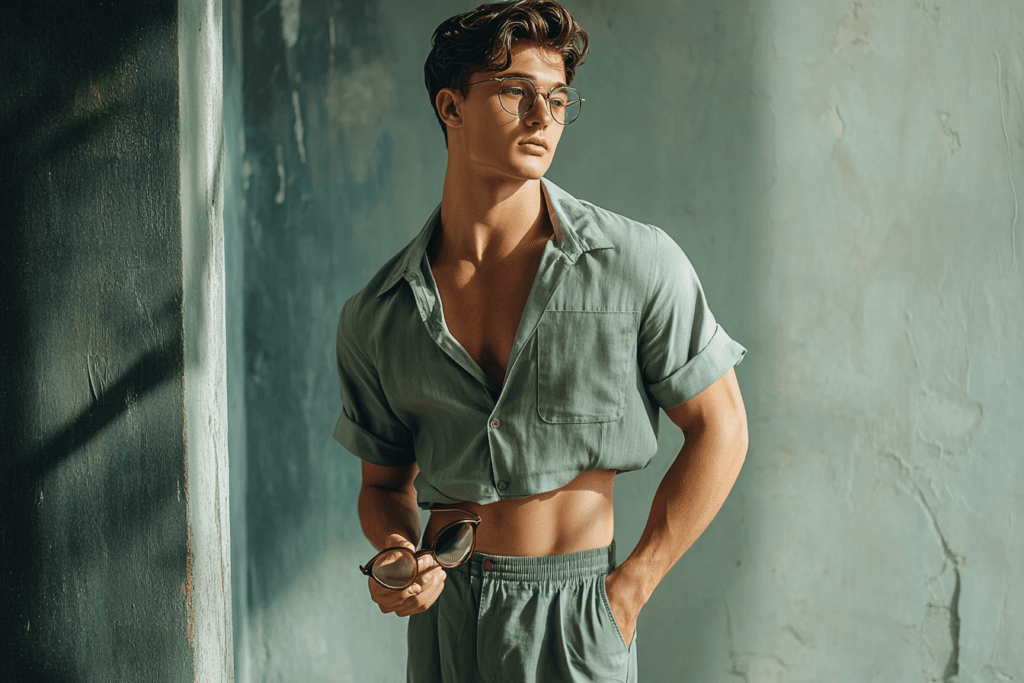
What’s Common Misconceptions About Breathable Fabrics
All Natural Fabrics are Breathable
Some think all natural fabrics breathe well, but that’s wrong. Cotton and linen let air flow easily, but not all do. Wool traps heat to keep you warm, so it’s less breathable in hot weather. Silk feels smooth and cool but doesn’t always allow enough airflow during heavy activities.
The weave and thickness of natural fabrics matter too. A tightly woven cotton shirt may feel less airy than a loose linen top. This shows not all natural fabrics are equally breathable. Always check the fabric’s design and purpose before assuming it will keep you cool.
Synthetic Fabrics Aren’t Breathable
Many believe synthetic fabrics don’t breathe, but that’s not true. Some synthetics, like polyester mesh and nylon-spandex blends, are made to improve airflow and manage sweat. These fabrics are great for sportswear because they help control body temperature.
Tests show some synthetic fabrics, like silk, combine breathability with water resistance. This is useful for protective gear, as it blocks droplets but allows air. However, not all synthetics perform the same. Studies found cotton filters particles better than some synthetics. Picking the right synthetic fabric is important for your needs.
Breathable Fabrics are Always Expensive
People often think breathable fabrics cost a lot, but that’s not true. While high-tech materials like GORE-TEX can be pricey, there are cheaper options. Cotton and linen are naturally breathable and affordable. Many budget-friendly activewear brands use polyester blends that breathe well without costing much.
The price of breathable fabrics depends on added features like waterproofing or odor control. High-tech fabrics cost more, but simple ones like cotton or bamboo are cheaper and still comfy. By knowing your needs and exploring options, you can find breathable fabrics that fit your budget.
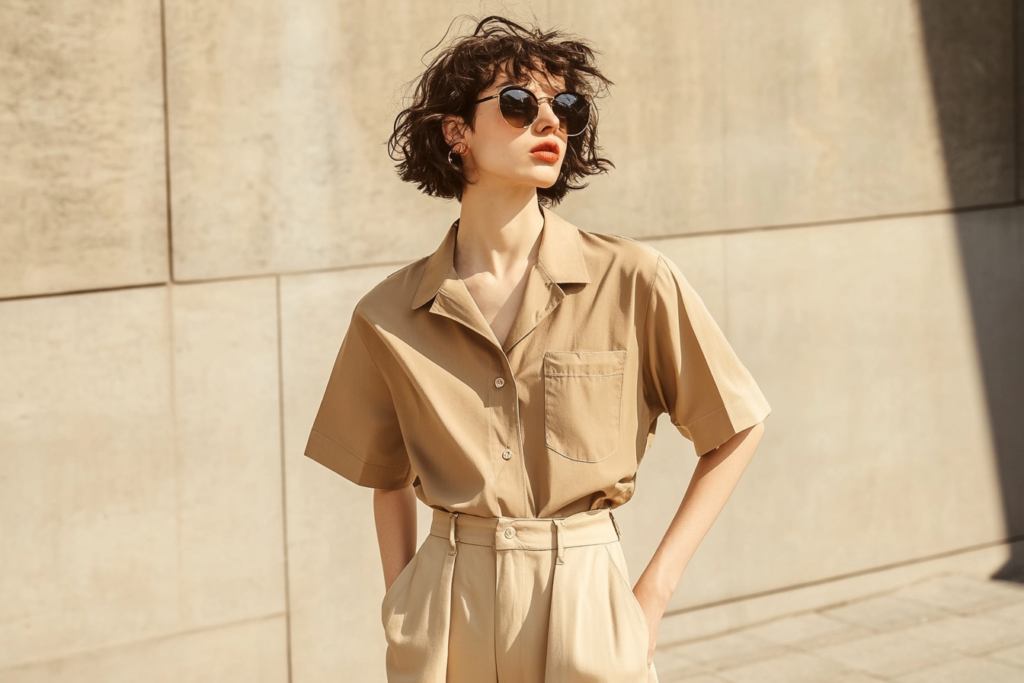
Where to Use Breathable Fabrics
Sports and Activewear
Breathable fabrics are super important for sports clothes. They help control body heat and manage sweat during workouts. Fabrics like polyester and lyocell dry sweat fast, keeping you cool. This airflow stops you from overheating, even in tough exercises.
Athletes love breathable fabrics because they stop sweat buildup. Less sweat means less odor-causing bacteria. Special features make these fabrics even better:
- Tiny holes let air in but keep sweat out.
- Sweat-wicking tech keeps you dry and comfy.
- Stops rubbing, so no chafing during movement.
| Feature | Benefit |
|---|---|
| Tiny holes | Let air flow but block sweat |
| Sweat-wicking tech | Keeps you dry and comfy |
| Stops rubbing | Prevents chafing for better comfort |
| Odor control | Stops bacteria and keeps clothes fresh |
More people want breathable sportswear now. The market for waterproof breathable fabrics is growing fast. It’s expected to go from $2.29 billion in 2025 to $2.92 billion by 2030. This shows how much people value comfort in activewear.
Outdoor Gear and Uniforms
Outdoor gear and uniforms need breathable fabrics for tough conditions. These fabrics let air and sweat move, keeping you comfy in all weather. I’ve noticed breathable jackets keep me dry in rain but don’t trap heat.
Tests prove how well these fabrics work for outdoor use. For example:
| Performance Criteria | Testing Method | Description |
|---|---|---|
| Heat Control | DIN EN ISO 11092 | Checks how fabric moves heat from your body to the air. |
| Sweat Escape | DIN EN ISO 11092 | Measures how well sweat vapor leaves the fabric. |
| Sweat Handling | DIN EN 16422 | Tests how fabric absorbs and moves sweat away from skin. |
| Airflow | DIN EN ISO 9237 | Measures how much air passes through the fabric. |
| Water Resistance | DIN EN ISO 20811 and DIN EN 29865 | Tests how well fabric blocks water and repels it. |
These tests make sure outdoor fabrics are strong and comfy. Whether it’s a raincoat or a uniform, breathable fabrics make outdoor gear better.
Everyday Casual and Workwear
Breathable fabrics are great for casual and work clothes too. I like cotton and linen for casual outfits because they feel light and cool. These fabrics let air flow, stopping heat from building up.
For work clothes, breathable fabrics keep you comfy and looking sharp. Bamboo and nylon-spandex blends are perfect for office wear. They stretch and wick sweat, making long workdays easier.
Breathable fabrics are useful for daily life. They keep you cool in summer and comfy during busy days. Whether running errands or working, these fabrics make a big difference in how you feel.
Healthcare and Medical Uniforms
Breathable fabrics are important for healthcare uniforms. They make long shifts more comfortable for workers. These fabrics also help keep things clean, improving patient care.
Healthcare workers face tough conditions daily. Breathable fabrics let air flow, stopping overheating. Moisture-wicking features keep skin dry during busy tasks. This reduces discomfort and helps workers stay focused.
These fabrics also improve hygiene. Many medical uniforms now fight bacteria with antimicrobial properties. This lowers the chance of infections in hospitals, where cleanliness is key.
Compression garments made with breathable fabrics help healing and blood flow. They speed up recovery for patients. Some uniforms even have sensors to track vital signs. These fabrics improve care without losing comfort.
Here’s a table showing the benefits of breathable fabrics in healthcare:
| Property | Benefit |
|---|---|
| Antimicrobial | Stops bacteria growth, reducing infection risks. |
| Moisture-wicking | Keeps skin dry and healthy. |
| Breathability | Adds comfort during long work hours. |
| Compression garments | Helps wounds heal and boosts circulation. |
| Wearable sensors | Tracks vital signs for better patient care. |
Breathable fabrics also last longer. They handle frequent washing and sterilizing without losing quality. This makes them a smart choice for hospitals.
When picking healthcare uniforms, look for moisture-wicking and antimicrobial fabrics. These features ensure comfort and cleanliness, even in stressful situations. Breathable fabrics help workers and improve patient care.
Tip: Look for ISO or ASTM certifications when buying medical uniforms. These prove the fabric meets safety and performance standards.
Breathable fabric mixes science and comfort to make life better. It helps control body temperature and handles sweat, making it great for casual and activewear. New technologies, like fabric blends and eco-friendly methods, improve its quality and popularity.
Picking the right fabric keeps you comfy and supports your needs. Whether it’s sweat-wicking workout gear or airy summer outfits, breathable fabrics work for many purposes. More people want these fabrics because they combine performance with eco-friendliness.
| Feature | Details |
|---|---|
| Better Performance | Breathable polyester fabrics improve comfort and create new opportunities in the market. |
| New Technologies | Blending techniques and eco-friendly production improve fabric quality. |
| Sweat Control | These fabrics manage sweat and help regulate body temperature. |
| Popular Demand | People prefer fabrics that mix high performance with care for the environment. |
Check out breathable fabrics that match your lifestyle. From gym clothes to medical uniforms, they provide comfort and performance for every need.
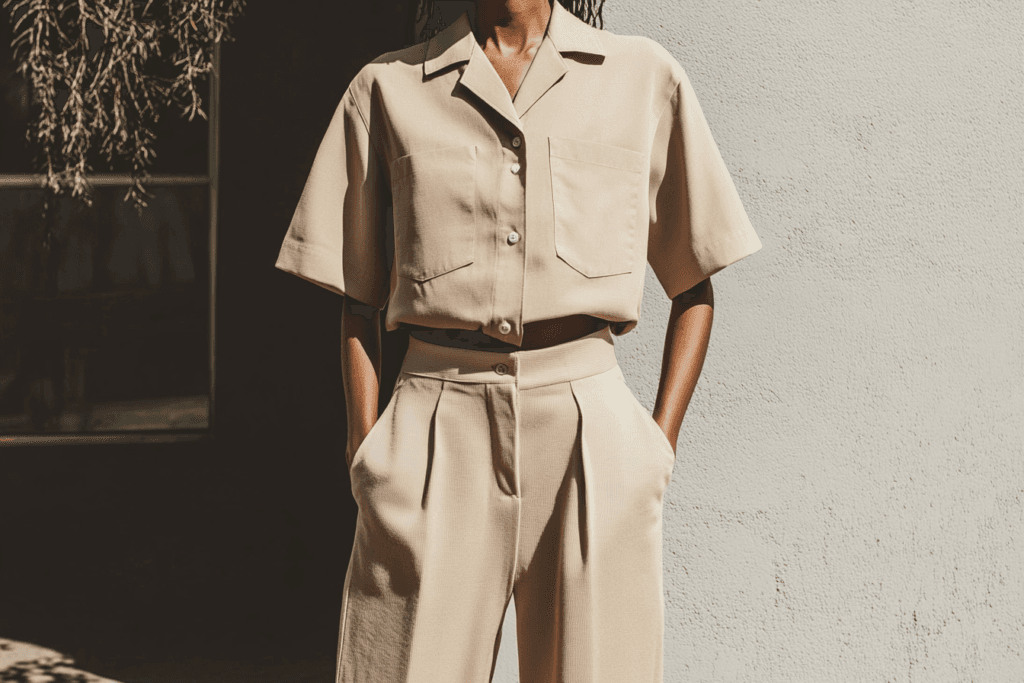
FAQ
What makes a fabric breathable?
Breathable fabrics let air flow and handle sweat. This keeps you cool and dry. The weave, fiber type, and features like moisture-wicking or special membranes improve how breathable it is.
How can I test if a fabric is breathable?
Try the “blow test.” Hold the fabric near your mouth and blow. If you feel air on the other side, it’s breathable. Light fabrics with loose weaves usually pass this test.
Are natural fabrics always better for breathability?
Not always. Cotton and linen breathe well, but wool traps heat. Synthetic fabrics like polyester mesh or nylon-spandex blends often work better for sportswear because of advanced airflow designs.
Can breathable fabrics also be waterproof?
Yes, some fabrics like GORE-TEX are both breathable and waterproof. They use tiny membranes that block water but let sweat escape. This keeps you dry during outdoor activities.
Do breathable fabrics work in cold weather?
Yes, they help control temperature by letting air flow and managing sweat. In cold weather, they stop sweat from making you colder. Pair breathable fabrics with warm layers to stay cozy and dry.
Are breathable fabrics eco-friendly?
Some are! Bamboo fabric is a good example. It breathes well, grows fast, and uses less water than cotton. Many brands now make eco-friendly breathable fabrics.
Why do athletes prefer breathable fabrics?
Athletes need fabrics that handle sweat and heat. Breathable fabrics dry fast, wick sweat, and stop overheating. This helps them stay comfortable and perform better.
Are breathable fabrics expensive?
Not always. High-tech fabrics like GORE-TEX cost more, but cotton, linen, and polyester blends are affordable. Many budget-friendly brands use breathable materials that work well without costing too much.
Related
1.Adaptive Fabric Responds to Changes in Body Temperature →
2.The Lab Manager’s Guide to Performance Testing →
3.Lab for Clothing Comfort Performance →
4.Waterproof breathable clothing →
5.Prediction of thermal protection performance and empirical study of flame-retardant cotton based on a combined model →
